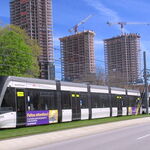Bordercollie
Senior Member
So then why are LRC's used strictly in the corridor when some recently rebuilt HEP stock is sitting idle.I can't imagine that Transport Canada would make up safety regulations for VIA just so they could make their recent purchase be more politically acceptable by forcing the LRCs of the tracks. Maybe I'm naive, but I feel that there is a bit of a firewall between those who make safety regulations and those concerned about PR for VIA/politicians.




